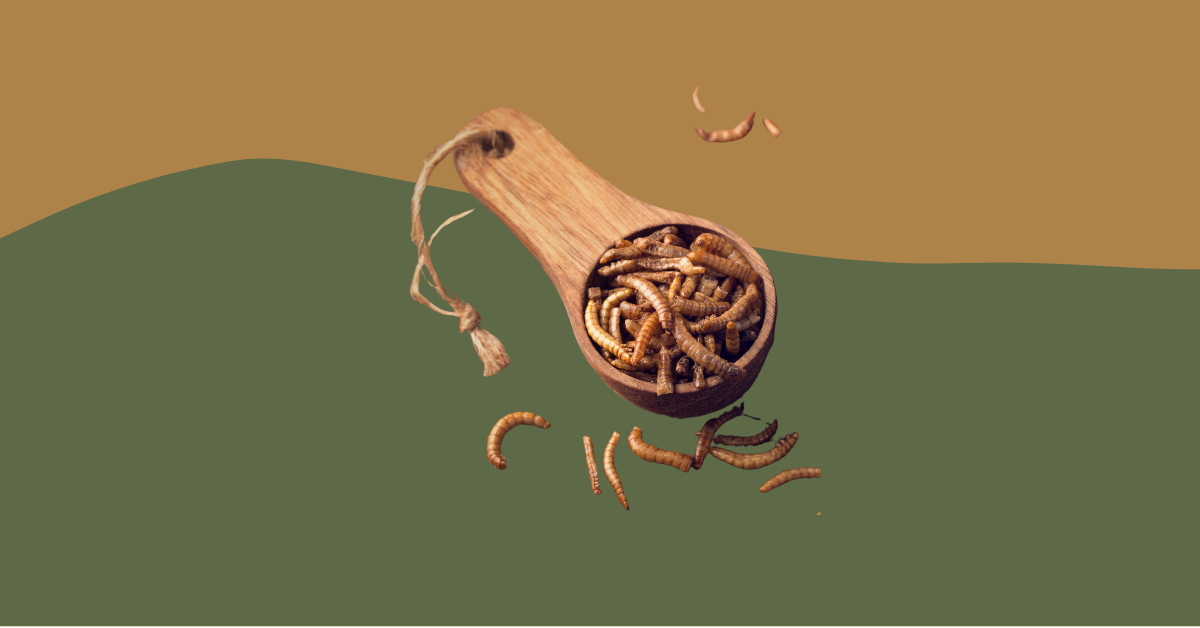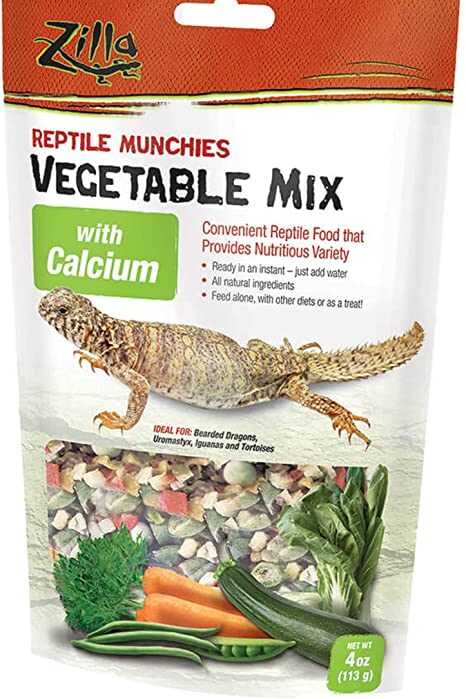Yes, bearded dragons can eat mealworms, but they should only be offered as an occasional treat. A portion size of 3-4 mealworms is suitable for adult bearded dragons.
Table of contents
A well-balanced diet is essential for their health and well-being. While mealworms can be a part of their diet, it’s important to know the proper way to include them. This article will provide the do’s and don’ts, a step-by-step preparation guide, and answer frequently asked questions to help you provide the best care for your bearded dragon.
Related Article: Bearded Dragon Care: Expert Tips and Insights
Do’s
- Offer mealworms as an occasional treat: Mealworms are high in fat and low in essential nutrients like calcium, so they shouldn’t be a staple in your bearded dragon’s diet.
- Gut load mealworms: Provide the mealworms with nutritious food for 24-48 hours before feeding them to your bearded dragon. This increases their nutritional value.
- Dust mealworms with calcium powder: Coat the mealworms in calcium powder to help balance the calcium-to-phosphorus ratio, which is essential for your bearded dragon’s bone health.
Don’ts
- Don’t feed mealworms to baby or juvenile bearded dragons: The hard exoskeleton of mealworms can cause impaction in young bearded dragons, leading to serious health problems.
- Don’t feed too many mealworms: Overfeeding mealworms can lead to obesity and other health issues due to their high-fat content.
Best Practices for Feeding Mealworms to Bearded Dragons
Following best practices when feeding your bearded dragon will ensure their safety and overall health. Here are some best practices to keep in mind:
- Choose the right-sized mealworms: Select mealworms that are no larger than the space between your bearded dragon’s eyes to prevent choking or impaction. Smaller mealworms have a softer exoskeleton, which is easier for your bearded dragon to digest.
- Monitor your bearded dragon’s weight: Regularly weigh your bearded dragon to ensure they maintain a healthy weight and adjust their diet accordingly. Overfeeding mealworms can lead to obesity and other health issues due to their high-fat content.
- Provide a varied diet: Offer a mix of insects, fruits, and vegetables to ensure your bearded dragon gets all the necessary nutrients. A well-balanced diet should consist of 80% vegetables and 20% protein sources, like insects, for adult bearded dragons. For juvenile bearded dragons, the ratio should be 50% vegetables and 50% protein sources.
- Feed mealworms during the day: Bearded dragons are diurnal, meaning they are active during the day. Offer mealworms during their active hours to ensure they are alert and able to hunt the mealworms effectively.
- Observe your bearded dragon’s behavior: Keep an eye on your bearded dragon’s behavior after feeding them mealworms. If you notice any changes in their behavior, such as lethargy or loss of appetite, consult a veterinarian.
- Clean your bearded dragon’s enclosure regularly: Mealworms can hide in your bearded dragon’s enclosure, leading to a buildup of uneaten insects. Regularly clean the enclosure to prevent this issue and maintain a healthy environment for your bearded dragon.
- Gut load mealworms: Provide the mealworms with nutritious food for 24-48 hours before feeding them to your bearded dragon. This increases their nutritional value. Foods like carrots, apples, or commercial gut load products can be used for this purpose.
- Dust mealworms with calcium and multivitamin powder: Coat the mealworms in calcium powder to help balance the calcium-to-phosphorus ratio, which is essential for your bearded dragon’s bone health. Additionally, dusting mealworms with a reptile-specific multivitamin powder ensures your bearded dragon receives essential vitamins and minerals.
- Quarantine new mealworms: If you’re introducing mealworms from a new source, keep them separated from your bearded dragon for at least 24 hours. This allows you to observe the mealworms for any signs of illness or parasites that could harm your bearded dragon.
- Store mealworms properly: Keep mealworms in a well-ventilated container with a layer of bran or oatmeal as bedding. Store the container at room temperature to ensure the mealworms remain healthy and active for your bearded dragon.
Related Article: Bearded Dragon Feeding Guide: Nutrition Tips
Step-by-Step Guide to Preparing Mealworms for Your Bearded Dragon
Step 1
Purchase live mealworms from a reputable supplier or pet store.
Step 2
Gut load the mealworms by providing them with nutritious food for 24-48 hours before feeding them to your bearded dragon.
Step 3
Choose mealworms that are an appropriate size for your bearded dragon.
Step 4
Dust the mealworms with calcium powder to increase their nutritional value.
Step 5
Place the mealworms in a shallow dish or directly into your bearded dragon’s enclosure to allow them to hunt and eat the mealworms.
Need Recommendations?
Here’s Our Top Amazon Picks
You may also like 📖
Frequently Asked Questions
How often should I feed mealworms to my bearded dragon?
Feed mealworms to your bearded dragon no more than once or twice a week to prevent overconsumption of fat. The frequency may vary depending on the age, size, and activity level of your bearded dragon. Always monitor their weight and overall health to determine the appropriate feeding schedule.
Are there other insects I can feed my bearded dragon?
Yes, other suitable insects for bearded dragons include crickets, dubia roaches, black soldier fly larvae, silkworms, and butterworms. Offering a variety of insects ensures your bearded dragon gets a well-rounded diet with different nutrients and textures.
Can I feed my bearded dragon dried mealworms?
It’s best to feed live mealworms, as dried mealworms have a lower nutritional value and can be harder for your bearded dragon to digest. Live mealworms also provide stimulation and encourage natural hunting behaviors.
Do bearded dragons need a calcium supplement?
Yes, bearded dragons require calcium supplements to support bone health and prevent metabolic bone disease. Dust mealworms and other insects with calcium powder before feeding them to your bearded dragon. You should also provide a source of UVB lighting in their enclosure, which helps them synthesize vitamin D3, essential for calcium absorption.
What fruits and vegetables should I include in my bearded dragon’s diet?
Bearded dragons can eat a variety of fruits and vegetables, such as collard greens, dandelion greens, mustard greens, bell peppers, squash, and blueberries. Always provide a mix of leafy greens, vegetables, and a small portion of fruits to ensure a balanced diet. Avoid feeding avocado, rhubarb, or spinach, as they can be harmful to your bearded dragon.
How do I know if my bearded dragon is overweight?
An overweight bearded dragon may have fat deposits around its limbs, neck, and tail base. They may also have difficulty moving or exhibit lethargy. If you suspect your bearded dragon is overweight, consult a veterinarian for guidance on adjusting their diet and exercise routine.
Can mealworms cause impaction in bearded dragons?
Yes, mealworms have a hard exoskeleton, which can be difficult for bearded dragons to digest, leading to impaction. Impaction is more common in baby and juvenile bearded dragons. To reduce the risk of impaction, feed appropriately sized mealworms, and offer them only as an occasional treat.
What can I do if my bearded dragon doesn’t seem interested in mealworms?
Some bearded dragons may not initially show interest in mealworms. You can try enticing them by holding the mealworm with feeding tongs, moving it around to stimulate their hunting instincts. If your bearded dragon still doesn’t show interest, try offering other insects or foods instead.
Can I breed my own mealworms for my bearded dragon?
Yes, breeding mealworms at home can be a cost-effective and convenient way to provide a steady supply for your bearded dragon. You’ll need a suitable container, bedding material (such as bran or oatmeal), and a food source for the mealworms (like fruits or vegetables). Keep the container in a dark, warm area and maintain proper hygiene to ensure a healthy mealworm colony.
Conclusion and final thoughts 💭
Feeding mealworms to your bearded dragon can be a tasty treat for them, but it’s important to remember that they should only be offered occasionally and in moderation. By following the guidelines provided in this article, you can ensure that your bearded dragon receives a well-rounded, nutritious diet, promoting a healthy and happy life.
Don’t forget to monitor your bearded dragon’s weight, provide a varied diet, and always choose appropriately sized mealworms to avoid potential health issues.
Looking for more? Here’s our roadmap:
General Bearded Dragon Pet Owners Guide
Bearded dragons are native to the arid regions of Australia and are known for their unique beard-like appearance. As pets, they have become increasingly popular due to their friendly and inquisitive nature, making them an ideal choice for reptile enthusiasts. Bearded dragons are diurnal, meaning they are active during the day, and their average lifespan ranges from 8 to 12 years, with proper care. When considering adopting a bearded dragon, it’s essential to be prepared for a long-term commitment and be well-informed about their care requirements.
One of the most crucial aspects of bearded dragon care is providing an appropriate enclosure. Adult bearded dragons thrive best in a 20 to 50-gallon tank, but a larger enclosure is always better. It’s important to always keep the tank clean. The tank should have a basking area with a temperature range of 95-110 degrees Fahrenheit, as well as a cooler area with a temperature between 75-85 degrees Fahrenheit. In addition, bearded dragons need access to UVB lighting to help them synthesize vitamin D3 and properly metabolize calcium, which is vital for their bone health.
A balanced diet is essential for a healthy bearded dragon. Their dietary requirements change throughout their life stages; juvenile bearded dragons need a higher protein intake, with insects making up around 80% of their diet and the remaining 20% consisting of vegetables and fruits. As they grow into adults, their diet should consist of approximately 20% insects and 80% vegetables and fruits. It’s important to offer a variety of food items to ensure they receive all the necessary nutrients, and to dust their food with calcium and multivitamin supplements as recommended by a reptile specialist or veterinarian.
Regular interaction and observation of your bearded dragon are vital for maintaining their well-being. Handling your pet gently and frequently can help build trust and strengthen your bond. Monitor your bearded dragon’s behavior, appetite, and overall health to detect any potential issues early on. If you notice any signs of illness, such as lethargy, loss of appetite, or irregular bowel movements, consult a reptile specialist or veterinarian for guidance. Proper care, feeding, and attention will ensure your bearded dragon remains a happy and healthy companion for years to come.







Leave a Reply